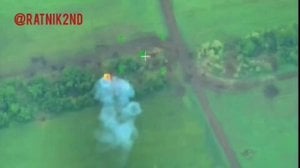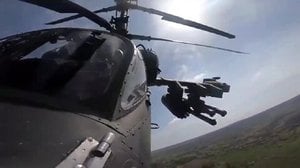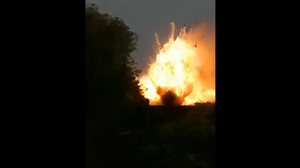
Ukrainians Down Russian Lancet Drone with Small Arms Fire
Published 1 years ago
Cell phone video recorded by a Ukrainian Soldier near an unknown part of the front-lines shows the destruction of an incoming Russian Lancet Loitering Munition via small arms fire.
Since the first time I saw a drone being weaponized and used to drop munitions on top of Syrian Arab Army Soldiers by the Islamic State in 2016, I have been standing on a soap box saying that the first best defense against this style of warfare would be the individual troop and his ability to conduct basic marksmanship on moving targets. Drone warfare was largely ignored until the Russo-Ukraine war kicked off and we started seeing the mass weaponization of off-the-shelf consumer grade drones, and people are just now starting to take this threat semi-seriously.
Unfortunately for the U.S. Troops who are dealing with General Officers who believe throwing money at a problem is the solution for everything, this isn't something we're going to begin taking seriously until as a country until it's too late. You see, our General Officers grew up as Battalion Commanders during the Global War on Terror. They see everything through the lens of the Counter-IED Warfare threat they grew up in. As a result, they're immediately looking at RF jamming solutions to defeat the drone threat, but anyone who was on the ground in Iraq and Afghanistan can tell you that RF jamming is only a half-measure to the larger threat of improvised explosives.
But still, here we are in 2023 with no viable solution to this problem. If Generals think tasking an aerospace company with designing a shoulder-aimed RF jamming system, they're already too far behind to find a solution. The individual Soldier, Marine, Airman, and Sailor need a kinetic way to destroy these drones, not a billion dollar jamming solution. Take teams out to the field with 12 gauge shotguns and let them learn to shoot trap on $300 commercial drones. Will it be expensive and time consuming? Yes. Will it be cheaper than $200,000 30 pound rifle shaped RF jamming guns that break as soon as they end up in inclement weather, still yes.
Better yet, force the United States Marine Corps to find a solution to this problem. Take a Marine Corps rifle company out to the field and tell them they can't come home until they figure out how to stop the drone threat with 80% efficacy using nothing more than their issued CIF equipment, and the assets they already have. I guarantee you one of them will duct tape some stuff together out of cami-net poles and a stolen humvee mirror that brings drones down inside of 72 hours. Just make sure you throw arty sims at them every 30 to 45 minutes and do it out at 29 Palms in July.
About the Author

Josh Brooks
Josh is an American writer and former USMC machine gunner with eight years of experience in ground combat arms throughout the GWOT. He is currently based in Texas and specializes in combat footage analysis and digital marketing.Follow Josh at OfficialJoshBrooks.com













